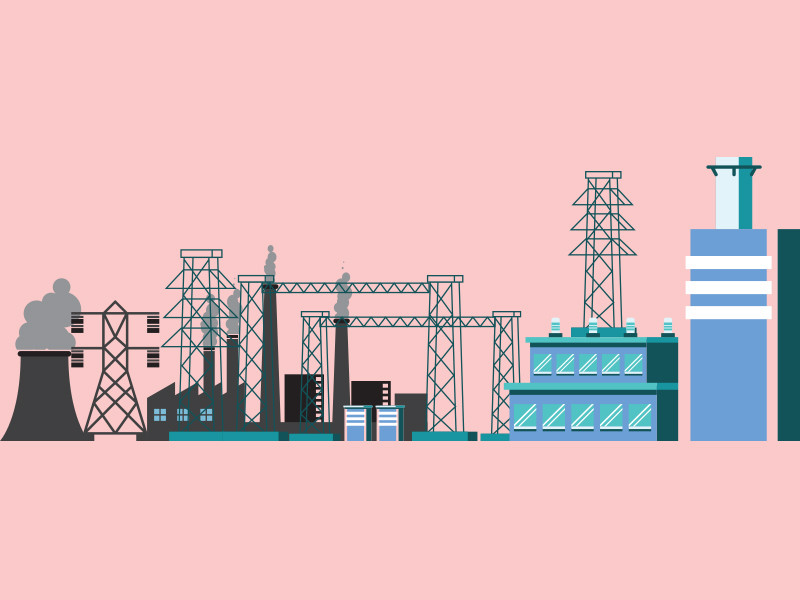
The power sector’s journey is a tale of sorry affairs that has crippled the entire energy chain in Pakistan. Despite being critical in shaping the nation’s economic and social fabric, the sector casts a looming shadow over the country’s landscape despite a surge in installed capacity. The root causes are politically motivated appointments of heads of power companies and their boards of directors (BoDs), leading to systemic inefficiencies and mismanagement.
The governance issue
The sector’s governance woes are a direct result of these appointments, causing high losses, power theft, and low recovery of electricity bills. Consequently, circular debt continues ballooning due to these inefficiencies and leakages, affecting the gas sector as well. Transmission and distribution (T&D) networks, plagued by losses of 25-30%, present a bottleneck, translating into significant financial losses and hampering efficiency.
The most daunting hurdle is the burgeoning monster of circular debt, reaching a staggering Rs2.5 trillion this fiscal year. This debt ensnares power plants, DISCOs, and the government in a crippling cycle of unpaid bills, financial constraints, and delayed investments. This results in frequent power outages, disrupting daily life, hindering economic activity, and dampening investor confidence.
Installed capacity vs reality
Pakistan’s installed capacity surged to over 41,000 MW in 2023 from 19,566 MW in 2007-08. Despite this, the power sector grapples with formidable challenges that cast a shadow on the country due to load shedding and high electricity bills. The primary reasons for high electricity bills are dependence on imported fuels, notably furnace oil and LNG, which serve as the lifeblood of Pakistan’s power generation. These fuels account for around 60% of total electricity production, leaving the sector vulnerable to international market fluctuations in energy prices.
Historical overview
Pre-independence (1947), Pakistan had small hydel and thermal power plants. After independence, the Water and Power Development Authority (WAPDA) was created in 1948 to develop water and power infrastructure.
The government focused on large hydropower projects like Warsak and Mangla dams in the 1950s-60s to boost electricity generation capacity and increase water storage.
Nationalisation began in 1974 during the Bhutto regime, bringing all generation, transmission, and distribution companies under WAPDA’s umbrella.
The unbundling of WAPDA started in 1998 under power sector reforms, leading to the creation of the National Transmission and Dispatch Company (NTDC), Power Generation Companies (GENCOs), and Distribution Companies (DISCOs).
Key factors contributing to the crisis
Various key factors have added miseries to the consumers and governments alike. Major factors include the setting up of Independent Power Plants (IPPs) during different governments, which were offered higher rates of return and uncapped dollar indexation. Additionally, policies were introduced to run these plants on oil, linking with capacity payments.
Power policies and their impact
Power Policy 1994: This policy, formulated during the Pakistan Peoples Party (PPP) regime, was the first to introduce IPPs. Despite boosting installed capacity, the power tariffs also went up due to the higher cost. These plants were based on imported fuel, causing domestic electricity tariffs to fluctuate with global oil prices.
Power Policy 1998: In response to the controversial projects under the 1994 policy, the Pakistan Muslim League-Nawaz (PML-N) introduced the 1998 power policy. This policy introduced competitive bidding for projects based on predetermined tariffs, offering more competitive pricing for IPPs and lower investor returns compared to the 1994 policy.
Power Policy 2002: During Pervez Musharraf’s regime, the 2002 power policy aimed to address high electricity tariffs and promote renewable energy. It introduced “fuel price indexing” to reduce tariff uncertainty for IPPs and provided incentives for renewable energy projects. However, the policy did not achieve significant success in meeting its objectives.
Power Policy 2015: The PML-N, upon returning to power, introduced the 2015 power policy to attract investment for IPPs under the China-Pakistan Economic Corridor (CPEC). The objective was to bridge the demand-supply gap and attract new investments. The policy announced an “upfront tariff” mechanism based on competitive bidding with predetermined caps. Several projects, including coal-based ones, were set up under CPEC with high return rates of up to 30%.
The government of the Pakistan Tehreek-e-Insaf (PTI) later revised tariffs for IPPs under all policies except 2015, as renegotiating deals with IPPs set up under CPEC proved challenging.
Political influence and BoDs
Experts assert that politically motivated appointments of board members are a primary contributor to the collapse of Pakistan’s power sector. Losses and poor governance began when boards were appointed on political grounds. Former WAPDA chairman Shakeel Durrani advocates abolishing these boards and restoring the Area Electricity Board regime to improve the sector. He recalls that electricity losses were 8-10% before 2007 when Area Electricity Boards were in place, but losses increased with politically motivated board appointments.
The number of power sector consumers has skyrocketed from 500,000 in 1958 to 20.5 million today. Durrani points out that state-owned power distribution companies struggle to manage such a large volume of consumers, leading to rampant inefficiencies and losses. Currently, only about half the cost of the total electricity generated is recovered. Technical losses and power theft account for 30-32% of these losses, while 15-18% of electricity is lost due to low recovery of bills. This results in annual losses of approximately Rs500-600 billion.
Durrani suggests appointing professionals in these companies and giving management control to the private sector for 15 years, with a guarantee to increase bill recovery by 10% annually.
Adhocism, incompetence,
higher taxes
Incompetence fosters corruption, a phenomenon evident in DISCOs. No DISCO has a permanent chief executive officer; all are run on an ad-hoc basis. In this scenario, boards have taken executive control, with many directors being close relatives of parliamentarians. These directors are more concerned with transfers, postings, and transformer installations than policy-making. DISCOs face a shortage of around 60,000 staff members, requiring immediate appointments. The existing policy is not consumer-centric; instead, it is designed to offload Discos without addressing consumer needs. Weak governance exacerbates the situation, leading to rampant power theft.
Tax burden on consumers
With the Federal Board of Revenue (FBR) failing to expand the tax net, it is easier to collect taxes from electricity consumers. DISCOs charge taxes that go to provinces, with consumers paying 40-50% taxes on electricity bills, including 18% GST, electricity duty, income tax, advance income tax, and further tax. Additionally, they pay PTV fees, and Radio Pakistan is reportedly calling for collecting Rs10 from electricity consumers to subsidise it. The lack of governmental writ has led to rising power theft and low recovery of power bills.
Former Managing Director of PEPCO Tahir Basharat Cheema states that generation has become very expensive, beyond the affordability of consumers. NTDC transmission issues, incompetence, higher taxes, duties, low recovery of bills, and staff shortages have resulted in the poor performance of Pakistan’s power sector.
Consumers suffer despite higher installed capacity
Though Pakistan has achieved the highest installed capacity at around 41,557 MW, up from just over 19,500 MW a decade ago, the country continues to face load-shedding woes. The high installed capacity has increased electricity bills due to capacity payments. Most power plants remain shut, becoming a blessing in disguise for plant owners who receive multibillion-rupee capacity payments. The government expects power consumers to pay Rs2.2 trillion to those plants that remain closed during the current financial year.
The gap between actual generation and rising demand results in frequent power outages, hindering daily life and economic progress. Pakistan’s current installed capacity is around 41,557 MW, but peak demand during summer can reach a staggering 31,000 MW, leaving a shortfall of nearly 10,000 MW. This gap translates into frequent power cuts.
Former Energy Member of the Planning Commission Shahid Sattar notes that unlike non-traded firms that can pass on higher energy costs to consumers, export-oriented firms must compete in international markets. They cannot pass on higher energy prices because consumers can substitute their products with those from regional economies with lower energy costs.
For traded sectors like textiles and apparel, which the economy depends on for foreign exchange earnings, cross subsidies in power tariffs act as a tax that cannot be exported. Load shedding continues to disrupt daily routines and hamper business activities, with rural areas facing even more dire situations, with outages lasting for hours to twelve hours. The World Bank estimates that power outages cost Pakistani businesses around Rs570 billion annually, crippling economic activities.
The shortfall of 10,000 MW represents roughly 25% of the current installed capacity. This gap persists due to technical constraints in the transmission and distribution network, unable to supply electricity due to outdated infrastructure.
Dependence on non-renewables
Pakistan’s power sector remains heavily reliant on dwindling reserves of non-renewable resources, primarily fossil fuels like coal, furnace oil, and natural gas. This dependence comes at a steep cost, not just for the nation’s finances but also for its environment and long-term sustainability. Previously, Pakistan depended on oil imports for power plants. However, the focus has now shifted to LNG imports, which have emerged as a key factor in the surge of circular debt. Volatility in LNG prices in the international market has significantly impacted Pakistan’s power sector. In recent years, Pakistan has struggled to secure LNG deals due to fluctuating gas prices, leading to vulnerabilities within its power sector.
Pakistan’s total installed power generation capacity stands at over 41,000 MW, but the share of renewables remains minimal. As of 2023, renewable energy sources contribute only 7% to the energy mix, with hydro, solar, and wind contributing 3.5%, 2.5%, and 1%, respectively.
Environmental implications cast a long shadow
The burning of fossil fuels in Pakistan’s power sector poses a serious challenge to climate change. Fossil fuels release greenhouse gases like carbon dioxide, a major contributor to climate change. Pakistan’s dependence on these fuels exacerbates its vulnerability to the impacts of climate change, including extreme weather events, rising sea levels, and glacial melt. The International Renewable Energy Agency (IRENA) reports that Pakistan could save $1 billion annually by switching to renewable energy for electricity generation.
T&D issues: Power grid under strain
Pakistan’s power sector boasts significant electricity generation capacity, yet the nation grapples with persistent issues in transmission and distribution (T&D). The aging networks and high system losses act as significant bottlenecks, hindering reliable power delivery and contributing to financial woes. Over 60% of Pakistan’s T&D network exceeds its designed lifespan, resulting in frequent breakdowns and inefficiencies. Pakistan suffers from some of the highest T&D losses globally, estimated to be around 25% to 30% of generated electricity. These losses translate to billions of rupees lost annually, impacting power companies’ revenue and hindering their ability to invest in necessary upgrades. The World Bank estimates that Pakistan could save Rs140 billion annually by reducing T&D losses by just 5%. The Asian Development Bank estimates that upgrading the T&D network could add 10% to Pakistan’s existing generation capacity without building new power plants. Another study, conducted by the Institute of Water Resources Management, found that outdated equipment contributes to over 50% of technical losses in the T&D system.
Impact on revenue collection for power companies
The immediate and devastating consequence of electricity theft is direct revenue loss for power companies. DISCOs face significant revenue shortfalls due to unaccounted electricity consumption through theft. In 2021-22, the revenue shortfall for Pakistani DISCOs stood at a worrying Rs465 billion. To address operational expenses and debt obligations, DISCOs are forced to rely heavily on borrowings, raising tariffs for honest consumers and creating a burden on those who already abide by regulations.
Outdated technology and lack of investment
Despite increased installed capacity, Pakistan’s T&D system cannot efficiently deliver electricity to consumers. Significant investments have been made in generation, but not in the T&D network. For example, the transmission system is not capable of carrying the entire production from Thar coal-based power plants. Many of Pakistan’s power generation plants are aging thermal plants that are inefficient, consuming more fuel while generating less electricity. This inefficiency results in wasted fuel and expensive electricity, burdening consumers.
Financial viability and circular debt
Circular debt has reached alarming levels in Pakistan, exceeding Rs2.5 trillion as of January 2024. This has severe consequences for the power sector, as high circular debt deters both foreign and domestic investment. Heavy investment in renewable energy is required to improve the energy mix and reduce electricity costs. The base tariff has increased from Rs16 per unit to Rs30 per unit over the last two years, further hindering investment in renewables. The previous Pakistan Democratic Movement (PDM) government floated a tender for renewable projects, but investors did not participate due to the prevailing financial issues.
Inconsistent policies
Frequent policy changes have affected investor confidence, hindering private sector participation in the power sector. Investors require long-term stability and predictability to make significant investments in infrastructure and technology. Pakistan needs long-term stable policies to attract investors. Investment in smart grid technologies to reduce losses is also essential. Advanced metering, automation, and data analytics can optimise grid operations and reduce losses. The country must replace aging equipment and infrastructure with modern, efficient technologies to minimise T&D losses.
Regulatory framework issues
Lack of coordination and communication between different regulatory bodies lead to delays, inefficiencies, and inconsistent enforcement. Promoting regulatory best practices and international standards is key to attracting foreign investment and enhancing the power sector’s competitiveness. Encouraging public-private partnerships (PPPs) for infrastructure development and operation can leverage private sector expertise and resources.
Optimising existing hydropower
Historically, successive political governments have neglected dam construction. Major dams like Tarbela and Mangla were built during General Ayub Khan’s tenure, but no significant dams were constructed afterward. The second phase of dam construction began during General Musharraf’s regime, with work starting on several hydropower projects. The former WAPDA chairman highlighted that work on eleven hydropower projects were started during Musharraf’s regime, including the Neelum Jhelum project and the Mangla Dam Raising Project, which benefitted Pakistan’s agriculture sector with Rs100 billion.
Durrani also credited former prime minister Yousuf Raza Gilani for the Basha dam approval by the Council of Common Interests (CCI) in 2010, preventing it from becoming another Kalabagh dam issue. He advocates starting the Kalabagh dam to benefit Sindh and southern Khyber-Pakhtunkhwa (K-P) with increased fertile land and water storage. Approval for the Mohmand Dam in 2011 and the start of work on Kurram Tangi in 2010 debunk myths of no dam progress in Pakistan, said Durrani.
Overall, Pakistan’s power sector requires a comprehensive overhaul. This includes appointing professionals to key positions, ensuring stable long-term policies, investing in modern technologies, and promoting regulatory best practices, he stressed.
























COMMENTS
Comments are moderated and generally will be posted if they are on-topic and not abusive.
For more information, please see our Comments FAQ